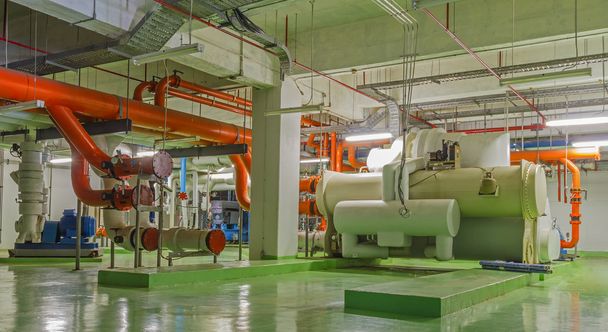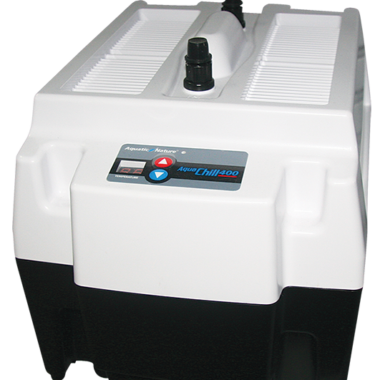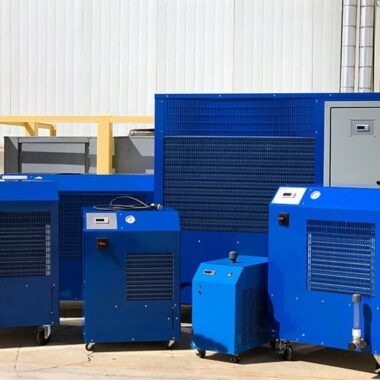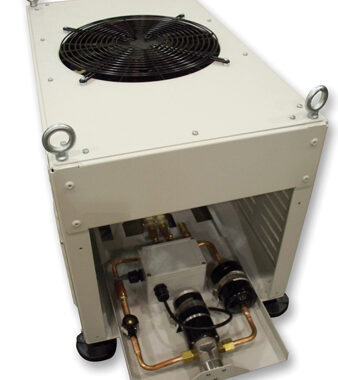Smart Chillers
Introduction
Smart chillers represent the next evolution in industrial cooling, integrating Internet of Things (IoT) technologies to enhance real-time monitoring and optimize system efficiency. As industries seek to reduce energy consumption and maintenance costs, smart chillers provide data-driven i
Key Features of Smart Chillers
- Real-Time Data Collection
Smart chillers are equipped with sensors that continuously collect data on various parameters such as temperature, pressure, flow rates, and energy consumption. This data is transmitted to a central platform where it can be analyzed in real time. This allows operators to monitor the chiller’s performance and detect any irregularities instantly. - Predictive Maintenance
By leveraging IoT analytics, smart chillers can predict when components are likely to fail, allowing for proactive maintenance scheduling. This prevents unexpected breakdowns, reduces downtime, and extends the life of the equipment. Predictive maintenance is based on data trends such as vibration patterns in motors or pressure drops in compressors. - Energy Optimization
One of the major advantages of IoT-enabled smart chillers is their ability to optimize energy use. By continuously analyzing performance data, the system can adjust cooling output according to demand, minimizing unnecessary energy consumption. This leads to significant cost savings, especially in industries where cooling represents a large portion of energy use. - Remote Monitoring and Control
IoT integration allows smart chillers to be remotely monitored and controlled via mobile devices or computers. Operators can adjust settings, troubleshoot issues, and receive real-time alerts from any location. This enhances operational flexibility and ensures rapid response to any issues that arise. - Enhanced Efficiency with Machine Learning
Smart chillers can also incorporate machine learning algorithms to continuously learn from their operating environment. Over time, these systems can autonomously adjust to optimize performance based on changing environmental conditions, operational demands, and historical performance data. - Cloud-Based Data Management
The vast amount of data generated by smart chillers is stored and managed in cloud-based platforms. This allows for seamless data access, enhanced security, and easy integration with other building management systems. The cloud also enables long-term data storage for trend analysis and optimization over time.
Benefits of Smart Chillers
- Reduced Operational Costs
By minimizing energy consumption and enabling predictive maintenance, smart chillers can significantly lower operational costs over time. The ability to avoid costly emergency repairs and optimize energy use provides a fast return on investment. - Improved Equipment Longevity
Smart chillers optimize equipment operation, reducing wear and tear on components. This not only increases the lifespan of the system but also improves overall reliability and reduces the need for frequent repairs or replacements. - Sustainability and Energy Efficiency
Incorporating IoT into chillers allows for smarter energy use, which contributes to overall sustainability goals. Smart chillers often qualify for energy efficiency certifications and can help industries meet regulatory requirements related to energy consumption. - Faster Issue Resolution
With real-time monitoring and predictive insights, operators can quickly identify and address issues before they escalate, reducing downtime and improving the overall performance of the cooling system.
Applications of Smart Chillers
- Industrial Manufacturing
Smart chiller are ideal for large manufacturing plants, where cooling demand can vary significantly throughout the day. The ability to adjust cooling levels in real time ensures that energy isn’t wasted, and downtime is minimized. - Data Centers
Data centers require continuous and reliable cooling to prevent overheating. Smart chiller can provide real-time monitoring and quickly adjust to changing temperatures, ensuring consistent performance while optimizing energy use. - Pharmaceutical and Chemical Industries
In industries where precise temperature control is critical, smart chiller ensure the stability of sensitive processes. Predictive maintenance capabilities are particularly beneficial in these environments to avoid process interruptions. - Commercial Buildings
Smart chiller are increasingly being used in commercial HVAC systems to improve comfort while reducing energy consumption. The integration of IoT allows for seamless monitoring and control, ensuring optimal indoor conditions. - Integration with Building Management Systems (BMS) Smart chillers can be easily integrated into larger Building Management Systems (BMS) using IoT connectivity. This integration allows for seamless control and coordination with other HVAC systems, lighting, and security systems.
- IoT-Enabled Retrofits for Older Chillers For companies with existing infrastructure, smart chiller retrofits are a cost-effective solution. Older chillers can be upgraded with IoT-enabled sensors and monitoring systems to achieve some of the benefits of modern smart chillers. This helps extend the lifespan of older equipment while improving energy efficiency and reducing maintenance costs.
Conclusion
Smart chiller, powered by IoT technologies, are transforming the cooling industry by providing real-time insights, improving energy efficiency, and enabling predictive maintenance. As industries continue to prioritize sustainability and cost savings, the adoption of smart chiller is expected to increase, delivering long-term benefits for both operational efficiency and environmental impact.






